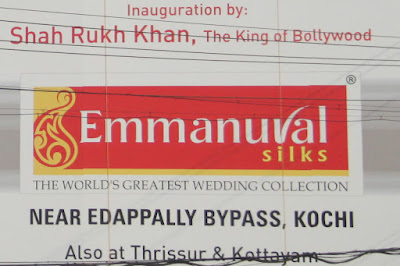One of the more difficult things for the tourist in India is finding out when local festivals are taking place. We had tried to find some as they appear dramatic with elaborately dressed elephants.
We had not been successful in our search, so imagine our delight as we reached Munnar, the capital of tea growing in Kerala to see that the whole town and its approaches were decorated with red bunting and flags. It seemed that this must be a major festival such as we had hoped to see.
However we soon realized that this was no temple festival, but was rather the annual convention of the local communist party.
Communism in Kerala is very well established and communist-led governments have been elected several times and alternate with the Indian Congress-led coalition every five years. The emphasis on social values may explain why Kerala has virtually 100% literacy and life expectancy and infant mortality rates similar to those of the United States. It may also explain why there is very little foreign investment in Kerala as the workers are highly politicized.
As with Communism in its heydays, there are two different flavors: CPI (Communist Party of India) and CPI(M) (Communist Party of India (Marxist))!!
"The CPI(M) was born in the struggle against revisionism and sectarianism in the communist movement at the international and national level, in order to defend the scientific and revolutionary tenets of Marxism-Leninism and its appropriate application in the concrete Indian conditions."!!!
In practice, the two communist parties are working together and are coalition partners.
As we left Munnar, we saw the local youth members preparing for a march through the town. They were very smartly turned out!
The demise of communist USSR caused serious problems for the tea industry of Kerala. The USSR was the world's largest tea importer and they imported a disproportionate share from Kerala as part of their effort to sustain the communist state government. This problem is seemingly being overcome.
Around Munnar, there was relative little sign of politicization in the tea plantations. This is not surprising because, in 2005 the Tata Group handed over the majority of the shares in the major local company, Kanan Devan Hills Plantations Company Private Limited, to the employees who now receive profit-sharing in addition to an apparently good benefits package.
Tea picking around Munnar is a year-round activity as the leaves are cut every ten days. An ingenious adaptation of garden shears is used to cut the top two leaves and collect them in a box attached to the shears.
There is certainly no lack of tea plantations in Kerala, which is just as well as the Indians are not only the largest producers of tea in the world, but are also (communists included), the world's greatest consumers of tea!





















































